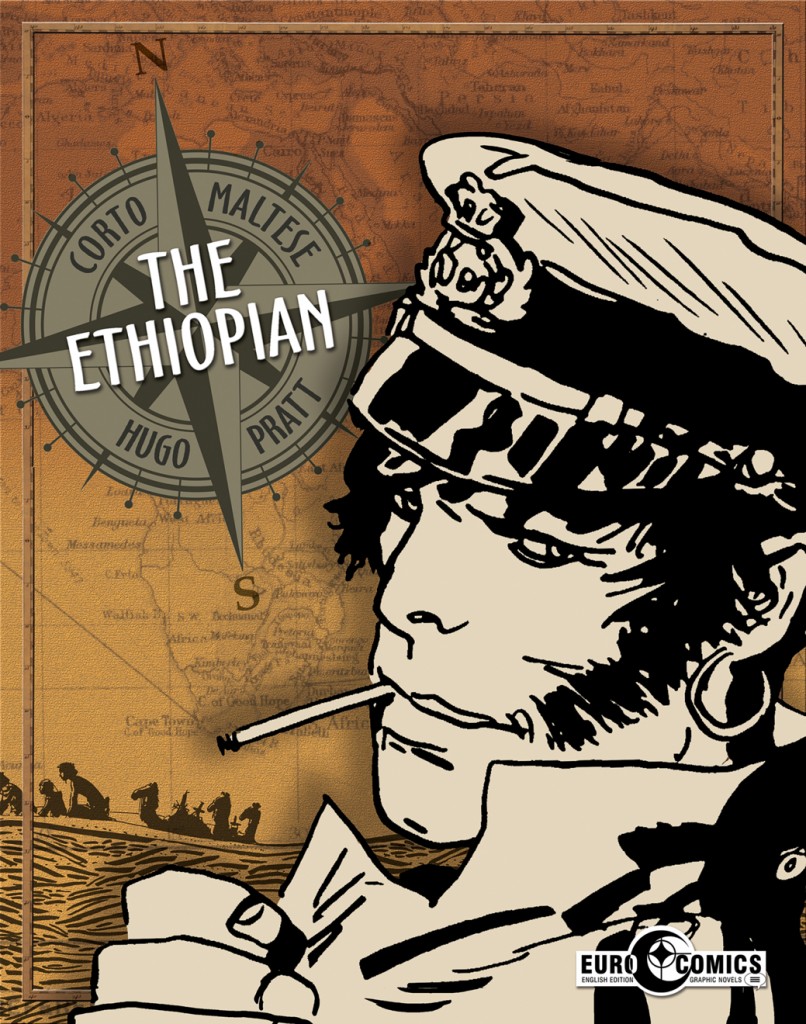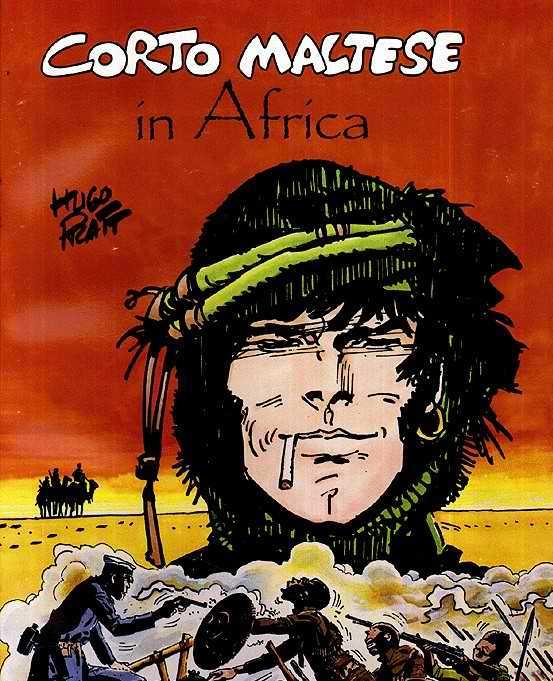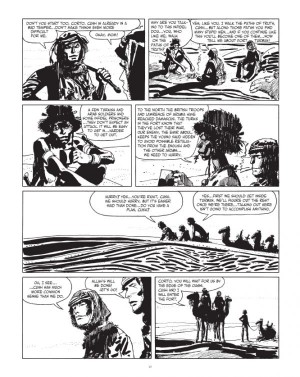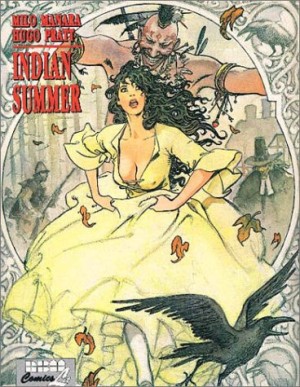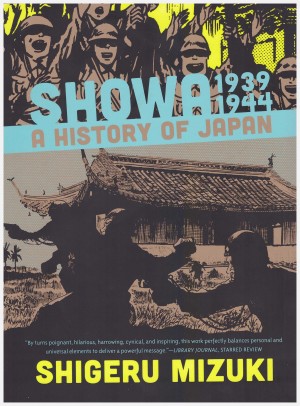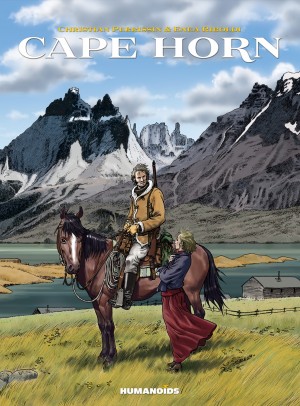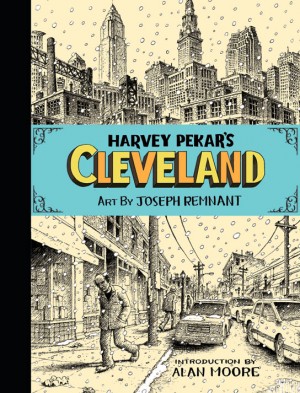Review by Fiona Jerome
The Ethiopian is a four-section story set in Ethiopia andYemen just before World War I. It was an area creator Hugo Pratt knew from his childhood, and one he also later studied in and influenced his tale of freedom fighters and British colonialism. It’s an area still unsettled today.
As ever, in the The Ethiopian stories it is hard to get a fix on where Corto’s loyalties lie. He seems to be accepted, even welcomed, by everyone from the British to the roaming Bedouin tribesmen, although at times he’s clearly been in trouble with all of them. There is an outstanding cast of supporting characters including Cush, a wonderfully intriguing young Cushite warrior who talks in riddles and whose name perhaps indicates that he is the exemplar of his people. He lives for battle, and yet when faced with almost certain, anonymous death, retreats as readily as Corto will; in other words he’s not a foolishly deluded cipher for death and glory, but a reasoning and very clever guerrilla. He knows how to pick his fights and glories in them.
Corto and Cush’s exchanges, sometimes mystifying, often funny, are a highlight of the scripting, a good sense of which are expressed by the translation, which is better than usual. Dialogue is sparse, narrative scarce – Pratt allows the pictures to do their work and has very little narrative script in his work from this point on, not that he ever over-burdened his stories with words.
Pratt weaves his knowledge of the area’s complex and every-changing political situation throughout the book, which opens with Corto and Cush assisting a Lawrence of Arabia-style British insurgent and his band of Arabs in his raid on a Turkish fort. It ends with him ‘rescuing’ a cowardly British commanding officer from the locals by shooting him – a much nicer death than they had planned for him, but a reminder that Corto is humane only to the point where his own skin might be in danger.
In these stories you can see Pratt’s art developing and simplifying compared to the South Sea and Irish adventures that precede it – not that he ever drew in a tight or particularly polished way. There are more heavy blacks, more very simple landscape backgrounds, and more use of patterning. Absent are the heavily detailed buildings and machinery often added by his studio of assistants. The line is looser and freer than in previous works – although nowhere near as simplified as it becomes towards the end of Pratt’s life. On the first page of the fourth story, for instance, a random series of black and white lines develops, as the viewpoint draws back, to the stripes on the side of a zebra and from the zebra the viewpoint develops out into a series of landscapes, before the characters are introduced, giving a sense of the importance of the land, the situation, in how the story is driven.
The Ethiopian is one of the best sections of the Corto saga, a series of tales in which no one is right, set in a landscape that encourages great heroism and great risk-taking. It’s exciting and informative and wholly engrossing, a great marriage of sparse storytelling and sparse art.
This was previously available under the title Corto in Africa, and also included a useful introduction, along with some of Pratt’s notes and photographs to introduce the less historically-minded reader to the background. They’re mystifyingly absent from the otherwise far superior Eurocomics edition.
